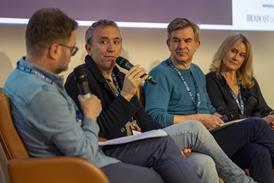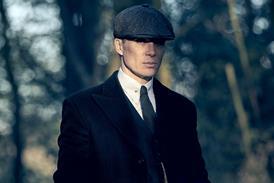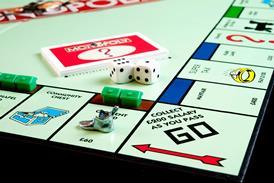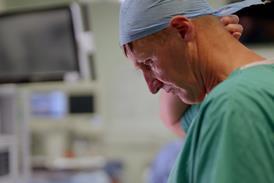Britain’s biggest broadcasters are reaping the benefits of adopting low-energy technology and leading the way in developing environmentally sustainable buildings.
Becoming an environmentally sustainable business is just like giving up smoking. So says Alex Balardi, whose company, GreenBe, is a consultant to UK businesses seeking a greener way of operating.
He cites clinical studies in which, despite being given a virtual death sentence by a doctor, heart patients left to their own devices found it almost impossible to make lifestyle changes sufficient to recover. But patients who connected themselves to a broader recovery community were able to make life-saving changes relatively easily. The solution became about “us” rather than “me”.
Likewise, businesses working together for sustainability have a greater chance of success than companies operating in isolation, and high-profile enterprises can set powerful examples.
In June, Sky opened Harlequin 1, a building purpose-built to act as its London headquarters. The building, now named Sky Studios, has been called the most environmentally sustainable broadcast facility in Europe and has already received accolades for its ground-breaking design.
Low-energy design
Conceived by design firm Arup Associates, Sky Studios uses one-third of the energy of similar, more conventional facilities.
Positioned to make maximum use of sunlight for temperature control and illumination, the building employs natural ventilation, and employees can open and close windows electronically. Two huge wind turbines atop the building will, pending final planning permission, supply sufficient electricity to power all of the building’s lighting.
An on-site combined cooling, heat and power plant, currently under construction, will capture the building’s waste energy and reuse it to supply 20% of the energy it needs for electricity and heating. Sky Studios also harvests rainwater, stored in massive tanks, which will be used to flush out all the toilets in the building.
BSkyB director of broadcast services John Lennon says the layout is conducive to more efficient workflow. “We’ve divided the building into three horizontal zones, which we’ve called ‘Make’, ‘Shape’ and ‘Share’,” he says.
“The result is a multiplatform distribution hub for all Sky’s media outlets, including - for the first time - a single home for Sky Sports. The building will enable all original content to be filmed, edited and transmitted within a single facility.” Today, more than ever, energy efficiency means cost efficiency, and broadcast centres are notoriously high energy users.
“Our strategy for addressing this challenge has been two-fold,” says Lennon. “First, we ensure that we maximise the use of on-site renewable energy sources, to offset a significant proportion of the building’s power needs; second, we work closely with our technology partners to ensure Sky Studios is kitted out with the most efficient equipment available.”
Sustainable hub
The £233m site in Osterley is home to eight naturally ventilated studios, five HD studios, 45 edit suites, 14 voiceover suites, four audio suites and space for 1,370 permanent production staff over five floors - each the size of a football pitch.
Systems integrator ATG Broadcast has been brought on board to fit out the post and production facilities. “We didn’t conceive the need for a new broadcast facility and then decide to make it sustainable; sustainability was part of the design brief from the very beginning,” says Lennon.
“We don’t see sustainability as an optional add-on.” Sky’s environmental steering group, headed by chief executive Jeremy Darroch, has set a target of reducing gross CO2 emissions by 25% by 2020 (against a 2008/09 baseline) and reusing or recycling 70% of waste by 2012. Broadcasters across the UK are striving for greater sustainability, but it’s the big players that often lead the way.
Last year, the BBC implemented a review of its existing environmental plan and put in a revised plan with targets to reduce energy consumption, CO2 emissions, water use and waste per person by 20% or more by the end of 2012. To achieve that, the BBC has implemented a variety of initiatives. Last month, it launched its carbon calculator software for broadcasters - ‘Albert’ - developed in partnership with Bafta.
It will be shared across the broadcast industry as a tool to identify opportunities for broadcasters to operate more efficiently and sustainably. The BBC is also continuing its ‘rail only’ travel policy to reduce CO2 emissions, and is choosing video conferencing whenever possible to further reduce travel-associated emissions. Meanwhile, the BBC’s rainwater harvesting system at Media Village has reduced usage by 13% in its first year.
Digital technology does away with some of the material excess associated with film and videotape technology, particularly in distribution, but it also requires a lot of computing power - which, of course, requires electricity to run and cool servers. The BBC is seeking ways not only to cool and run servers more efficiently, but to compute more efficiently.
The way forward is not more computing and rendering power, but smarter use of existing power. In July, the BBC published its ‘Low Energy Lighting Guide for TV Productions’. Adrian Poole, the BBC’s new director of IT and technology delivery, says: “The BBC guide will help programme makers across the industry reduce their energy consumption and carbon footprint. Though each programme is different, we can all share learning in order to produce the most sustainable productions possible.”
LED adoption
Cooler, more efficient lighting is an essential component of making the UK broadcast industry more green, and it will inevitably mean broader adoption of LED lighting. LED lighting offers cool housing temperatures, extremely long life, and very low power consumption. Venerable camera and lighting supplier Arri has been a leader in manufacturing new, efficient production equipment.
Notably, Arri developed ceramic floodlights that had cooler housing temperatures and low-power consumption, and is leading the way in the transition from tungsten lamps to LED-based lighting. This year at NAB, Arri debuted its new L series LED fixtures (see box, below). Most green innovations are often still driven by financial consideration as much as any climate warning.
Fortunately, the increase in efficiency demanded by sustainability yields financial dividends. Rising energy prices and stricter government incentives have pushed forward technological innovation. This innovation, in addition to helping to save our future, is helping to propel the UK tech industry forward. If the trend continues, we could see an industry that is not only creating content using sustainable methods, but is also supplying the world with a new generation of green technologies.
Arri: cameras and lighting
Camera and lighting supplier Arri has made equipment for the film and TV industries since 1917, and has spent the best part of a century adapting to the industry’s changing needs. It was one of the first production equipment companies to develop lead-free electronics.
Given ever increasing electricity costs, it has been forced to provide some of the most efficient lighting in the business.
Today’s revolution in production lighting seems to be the shift from tungsten lamps to LED-based lighting, which offers cool housing temperatures, extremely long life, and very low power consumption.
It seems certain Arri’s LED will be its mainstay for years to come. At NAB this year, Arri debuted its new L-series LED Fresnels (pictured), which offer the benefits of tungsten lights as well as a range of new innovations, including precise colour and brightness control.
The lamps use 75% less electricity than comparable tungsten lamps. The company boasts that if 50 of its L-series lamps replaced 50 comparable tungsten lamps, the carbon footprint benefit over five years would equal the planting of 10,600 trees.
Arri president Glenn Kennel says improvements in camera sensitivity also contribute to more efficient lighting use. “The combination of the very sensitive Arri Alexa camera [EI 800] with the new L-series spotlightsprovides the opportunity to reinvent studio production, substantially reducing power and heat loads,” he says.





























No comments yet